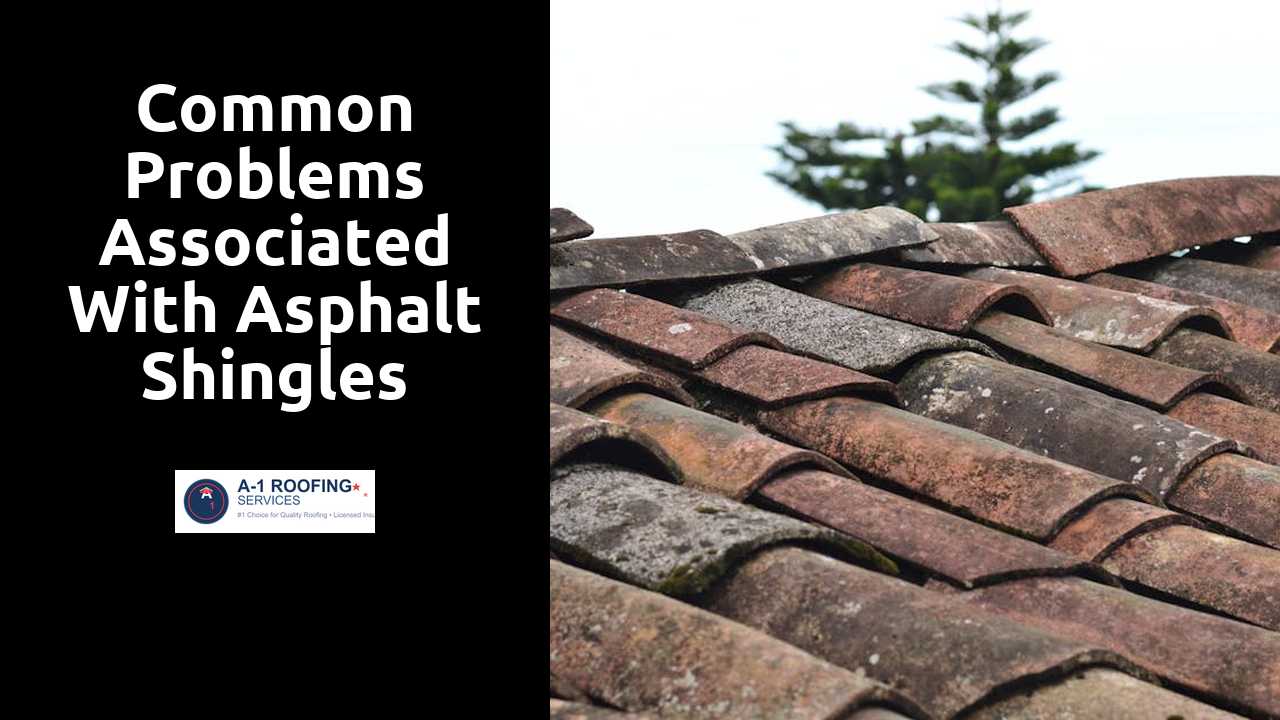
Common Problems Associated with Asphalt Shingles
Table Of Contents
Algae and Moss Growth
Homeowners often notice the presence of algae and moss on their roofs, especially in humid or shaded regions. These organisms thrive in environments where moisture accumulates, leading to unsightly stains and potentially damaging the shingles. Algae typically appears as dark streaks, while moss forms a thicker green coating. Both can retain moisture against the roof surface, which may accelerate deterioration of the underlying materials.
Regular maintenance can help mitigate these growths. Installing zinc or copper strips along the roofline can inhibit algae and moss proliferation when rain washes trace elements down the slope. Keeping nearby trees trimmed ensures adequate sunlight reaches the roof, reducing damp conditions. Additionally, routine inspections and cleanings can help homeowners catch early signs of growth before they lead to more significant issues.
See here for more great tips.
Prevention and Treatment Options
Algae and moss can become significant problems for asphalt shingles, leading to unsightly stains and potential damage. To prevent growth, homeowners can consider installing zinc or copper strips along the roof ridge. These metals release particles that inhibit the development of algae and moss when rainwater washes over them. Regular roof cleaning with a gentle mixture of water and bleach can also help remove existing growth and discourage future occurrences.
For treating algae and moss infestations, specific cleaning solutions are available at home improvement stores. It’s vital to follow safety precautions and manufacturer instructions to ensure proper application. Regular inspections and maintenance are essential in catching these issues early, which can extend the lifespan of roofing materials. Maintaining gutters and ensuring proper drainage around the home can further minimize moisture accumulation, reducing the likelihood of algae and moss growth.
Ventilation Issues
Proper ventilation is crucial for maintaining the integrity of an asphalt shingle roof. It helps to regulate temperature and moisture levels in the attic space, preventing the buildup of heat and humidity. Insufficient ventilation can lead to a range of problems, including the warping of shingles and accelerated wear. Over time, trapped heat can cause shingles to deteriorate, leading to potential leaks or structural damage to the roof deck.
Inadequate airflow also creates an environment conducive to mold and mildew growth, compromising indoor air quality and possibly affecting the health of occupants. A well-ventilated roof encourages proper air circulation, which can prolong the life of the shingles and reduce repair costs. Homeowners should regularly inspect their roof's ventilation systems to ensure they are functioning optimally, addressing any blockages or issues promptly.
How Insufficient Ventilation Affects Roof Longevity
Poor ventilation can lead to excessive heat and moisture buildup in the attic space. This environment creates an ideal condition for damaging elements to thrive, leading to premature aging and degradation of roofing materials. Asphalt shingles rely on adequate airflow to maintain their integrity. When trapped heat causes shingles to dry out, they can become brittle and lose their protective qualities.
Inadequate ventilation has repercussions beyond the immediate effects on shingles. It can also contribute to issues such as ice dam formation in colder climates and higher energy costs due to increased reliance on air conditioning systems. The cumulative impact of these factors can significantly shorten the lifespan of the roofing system, requiring costly repairs or replacements sooner than expected. Maintaining proper ventilation is crucial for preserving the overall health of a roof.
Aging and Wear
As asphalt shingles age, various signs of wear become apparent. The color may fade significantly due to prolonged sunlight exposure. Cracks or splits can form due to temperature fluctuations, making the shingles more susceptible to leaks. Additionally, the granules that provide protection against the elements can start to wear off, resulting in reduced effectiveness and an increased risk of damage.
Homeowners should keep an eye out for these warning signs, as they indicate that it may be time to consider replacing the roof. If the shingles exhibit extensive curling or buckling, it is often a clear sign that their structural integrity has been compromised. Regular inspections can help identify issues early, allowing for better planning when it comes to repairs or replacements. Addressing problems promptly can save money in the long run and maintain the roof's protective capabilities.
Recognizing When to Replace
As asphalt shingles age, their structural integrity diminishes, leading to a higher likelihood of damage from environmental factors. Homeowners should inspect their roofs regularly, looking for signs such as curled edges, cracked surfaces, or missing shingles. These indicators often signal that the roof has reached the end of its useful life and may require replacement to prevent further home damage.
Another critical aspect to consider is the presence of leaks in the attic or interior spaces. Water stains on ceilings or walls often suggest underlying issues with the roof's performance. If repairs are becoming frequent and costly, it may be more practical to invest in a new roofing system instead of continually patching an aging one. Keeping a close eye on these factors can help ensure the longevity and safety of a home.
Related Links
How Weather Affects Asphalt Shingle PerformanceUnderstanding the Warranty of Asphalt Shingles